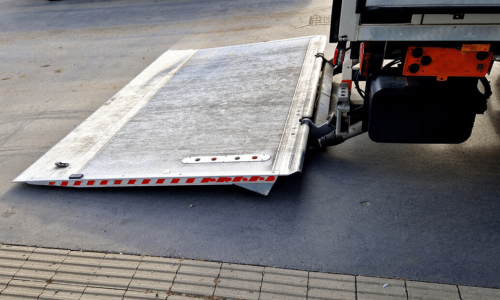Proper Packaging
Importance of Proper Packaging
At Complete Shipping Solutions, we understand the importance of proper packaging. Whether you are sending parcels, documents, or pallets, using appropriate packaging materials and techniques is essential to protect your shipments during transit. As a shipper, you must show a vested interest in your shipment if a claim should occur, negligence could mean your claim won’t get paid out. Additionally, when your items are clearly labeled and properly protected, not only do you minimize the opportunity for damage to occur but you also help minimize delays.
Choose the Right Packaging Materials
Selecting the appropriate packaging materials is the first step in ensuring the safety of your shipments. Below are some strong and durable materials to consider.
- Durable Cardboard Boxes: Sturdy containers made from thick and resilient cardboard material. They are designed to safely hold and protect various items during storage and transportation. These boxes come in different sizes and shapes to accommodate a wide range of goods, from small fragile items to larger, heavier objects. Their robust construction ensures that they can withstand handling, stacking, and external pressures, making them an essential packaging solution for shipping and moving purposes. Packaging your products in proper right angle boxes like this will help avoid incurring additional handling charges.
- Padded Envelopes: Lightweight packaging solutions designed to provide extra protection for smaller and delicate items. They typically consist of an outer layer of paper or plastic and a cushioned interior, which is often lined with bubble wrap or foam padding. Padded envelopes help safeguard items from minor impacts, shocks, and vibrations during transit, making them suitable for mailing items like electronics, jewelry, and documents.
- Bubble Wrap: Plastic packaging material composed of rows of air-filled bubbles trapped between two layers of plastic film. It is commonly used for cushioning and protecting fragile items. The air-filled bubbles act as shock absorbers, providing a layer of insulation against impact and preventing damage to delicate surfaces. Bubble wrap is available in various sizes and can be wrapped around items or used as a filler in packaging boxes.
- Foam Inserts: Custom-cut pieces of foam material designed to fit snugly around specific items within packaging. They offer excellent protection by cradling and cushioning items to prevent movement, reducing the risk of damage during transit. Foam inserts are commonly used for fragile or irregularly shaped items, such as electronics, glassware, or precision equipment.
- Packing Peanuts: Also known as “loose fill,” are small, lightweight, and often biodegradable materials used to fill empty spaces within packaging boxes. They help prevent items from shifting during shipping and provide a protective barrier against shock and vibration. Packing peanuts are poured into boxes to create a cushioning layer around items, ensuring they remain secure and undamaged.
- Loose Fill: Refers to any small, loose materials used to fill empty spaces in packaging boxes. This can include packing peanuts, shredded paper, foam particles, or even air pillows. Loose fill helps prevent items from moving around during transportation and provides an extra layer of cushioning, minimizing the risk of damage.
- Paper Pads: Flat sheets of sturdy paper material used for wrapping and cushioning items. They can be placed between layers of products to prevent scratching, rubbing, or other forms of surface damage. Paper pads are especially useful for protecting delicate surfaces, artwork, or items with polished finishes.
- Corrosion Protection: refers to measures taken to prevent or reduce the deterioration of materials due to chemical reactions with moisture, air, or other environmental factors. In packaging, corrosion protection may involve the use of specialized coatings, films, or materials that create a barrier against moisture and prevent the onset of rust or other forms of oxidation on metal surfaces during storage and transportation. This is particularly important for items that are sensitive to moisture and environmental conditions.
Wrap and Cushion Delicate Items
Delicate or fragile items require extra care. Wrap each item individually with bubble wrap or tissue paper, providing a protective layer against impacts. Place sufficient cushioning material, such as packing peanuts or foam inserts, in the box to prevent movement and absorb shocks.
Label Fragile Items Clearly
If you have fragile items in the shipment, label the boxes with “Fragile” or “Handle with Care” to alert the carriers to take extra precautions.
Secure the Contents
Properly securing the contents of your package is essential to avoid shifting during transit. Use packaging tape, shrink wrap and straps to seal boxes and pallets securely.
Label Clearly and Accurately
Ensure clear and accurate labeling of your packages. Clearly display the recipient’s address, including any specific delivery instructions or apartment numbers. Use labels or sticker pouches to protect the label from damage. Include your return address as well for easy identification in case of any issues.
Barcode Stickers
Apply only one sticker to each unit in sequential order to allow for the items to be tracked individually. Make sure the barcodes are not damaged and are easily legible. If one barcode in the sequence is damaged, then do not skip to the next one when applying. Instead, start fresh with a new sheet to avoid any confusion when they are being scanned.
Palletize When Possible
Proper palletizing involves arranging and securing items on a sturdy pallet for safe transportation. Stack boxes uniformly, distribute weight evenly, and use shrink wrap. In the event that shrink wrap is not proficient enough, it’s imperative that steel or vinyl straps are used to secure the products directly to the pallet for heavier products, or uniquely shaped products to avoid shifting during transit. Ensure the weight is distributed evenly and ensure it doesn’t overhang on the pallet.
Packing Drums for Transport
Drums and barrels can offer a safe solution for transporting hazardous materials and are available in steel, plastic and fibre. Certain liquids require different types of drums for transportation. Prior to choosing a drum, ensure you have checked the requirements for the particular substance you are transporting with Transport Canada.
Drums should always be palletized with no overhang and secured with metal straps or shrink wrap. If using metal straps, the strapping needs to be snug to the sides of the drums so that there is no room for the drums to shift during transport. You will also need to ensure that you keep the pallet weight capacity in mind prior to palletizing to make sure that you do not exceed it.
If you have any questions on how to properly package your products, we would be happy to help you. You can reach out to our Customer Care team for support.

explore logistics with Our complete shipping solutions Blog





